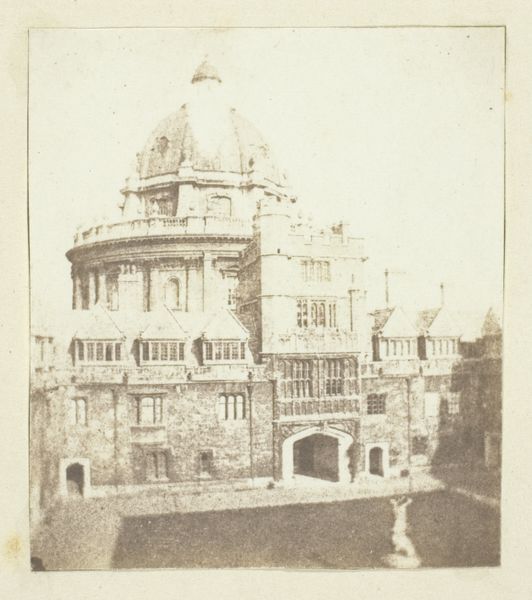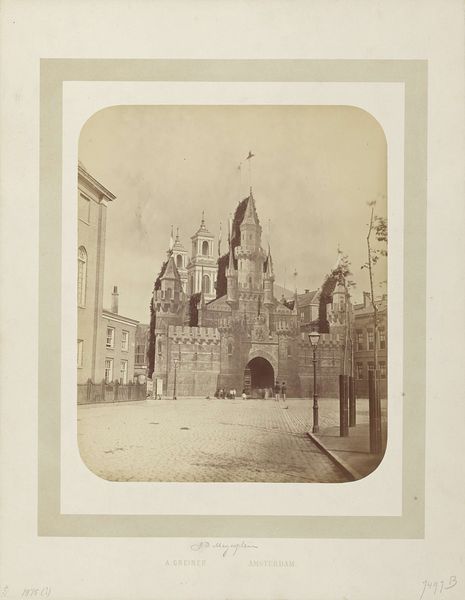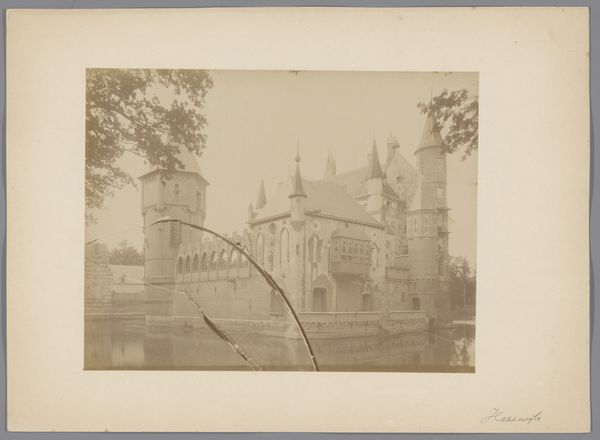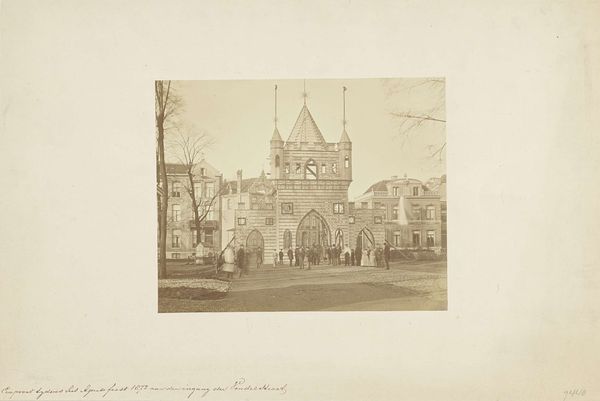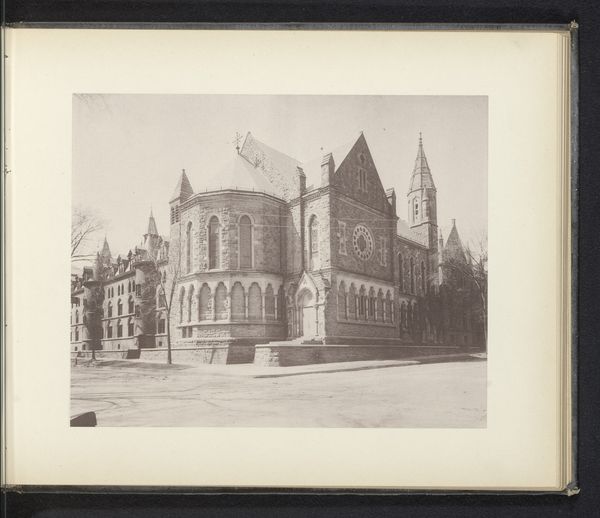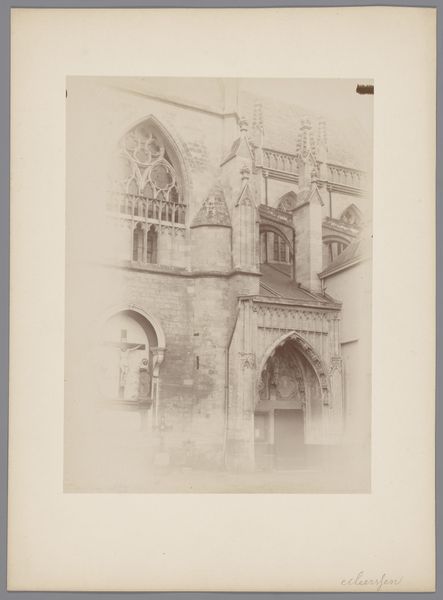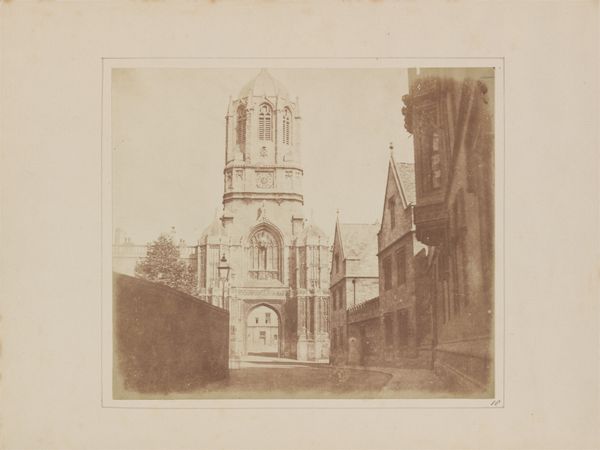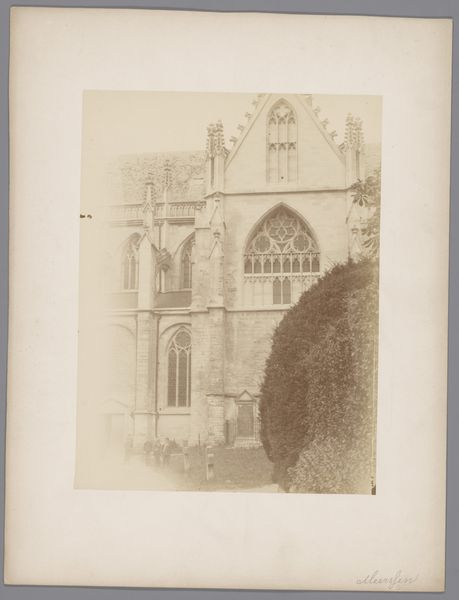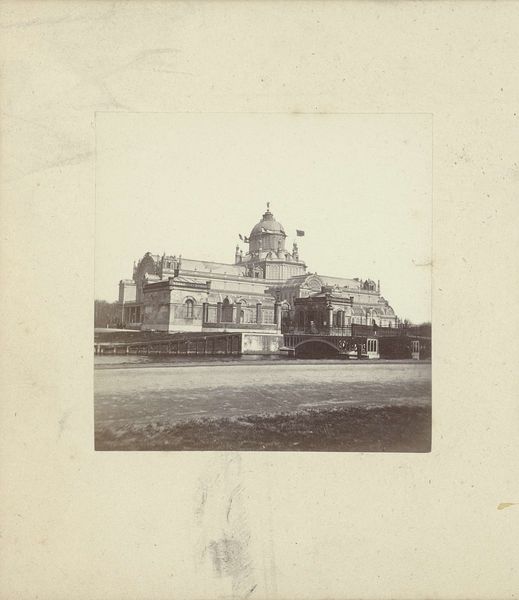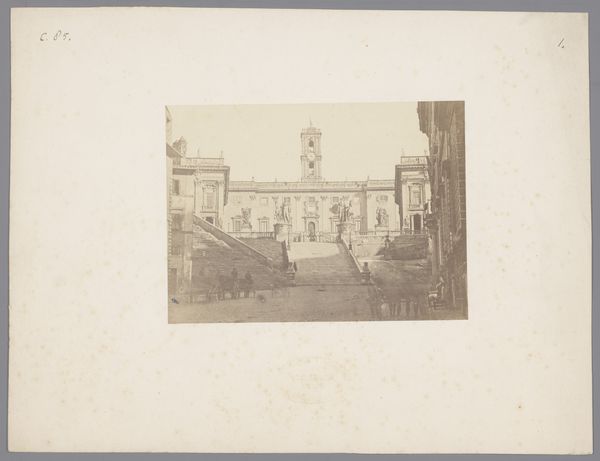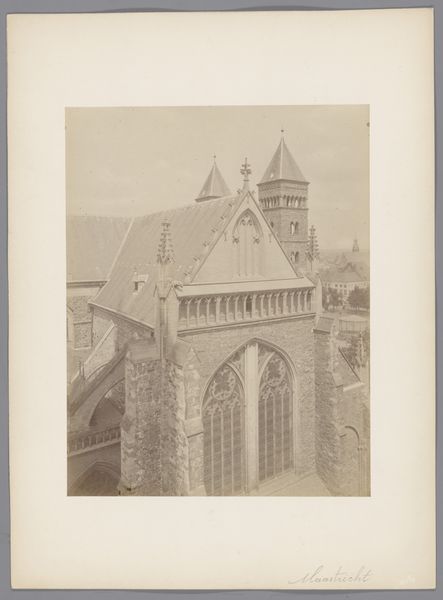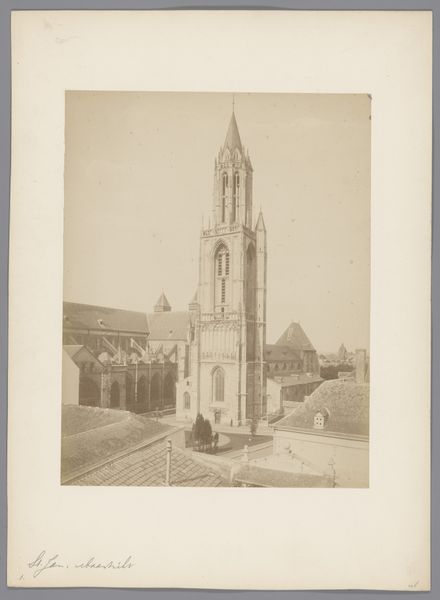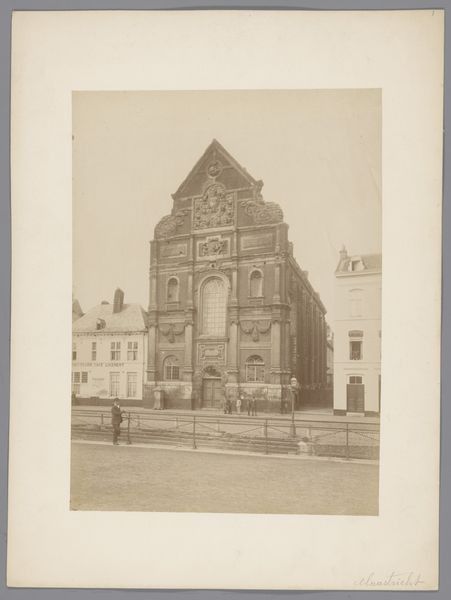
Erepoort bij de ingang van de Vondelstraat te Amsterdam tijdens het Aprilfeest 1872 1872
0:00
0:00
photography, site-specific, albumen-print
#
dutch-golden-age
#
photography
#
site-specific
#
cityscape
#
albumen-print
#
realism
Dimensions: height 208 mm, width 175 mm
Copyright: Rijks Museum: Open Domain
Curator: This albumen print by Wegner & Mottu captures a fleeting moment: a temporary gate erected for the April Festival in Amsterdam, 1872. What are your first impressions? Editor: It’s melancholy. The monochrome palette combined with what appears to be a deliberately stark composition evokes a feeling of impermanence, as if even in its creation this structure was destined to fade. Curator: The Realist approach here emphasizes a study in architectural forms—the repeated arches, the symmetry of the towers, and the way the light defines each structural component of the gate. Note how Wegner & Mottu use the street and surrounding buildings to create spatial depth. Editor: But the "real" here is manufactured! This site-specific installation wasn't about lasting beauty, but about temporary unity—a symbol, albeit brief, of celebration. The small crowd hints at the event's broader social context. Consider, who was this "April Festival" really for? Curator: It could also simply point to the rising middle class’ interest in documenting their city, and advancements in photography made it possible to record these scenes more easily than painting could. Editor: I’d say, though, that by including the surrounding buildings, it inadvertently tells another story: class divisions evident in the architecture itself. Look at the stark contrast between the grand gate and the ordinary buildings peeking out from behind! It almost feels like the structure performs a kind of gatekeeping function. Curator: Your point resonates – this duality underscores that while this image offers documentation, it is also layered with social complexities regarding spectatorship. The visual framing directs us not just to an object, but also to a culture. Editor: Absolutely, it beckons us to remember festivals aren’t apolitical. They manifest within specific systems of power. And in this muted photograph, the ephemerality speaks volumes, even 150 years on. Curator: Yes, that spectral essence becomes potent precisely because of photography's promise of reality—we glimpse not just form but a lost moment ripe with possible narratives.
Comments
No comments
Be the first to comment and join the conversation on the ultimate creative platform.
